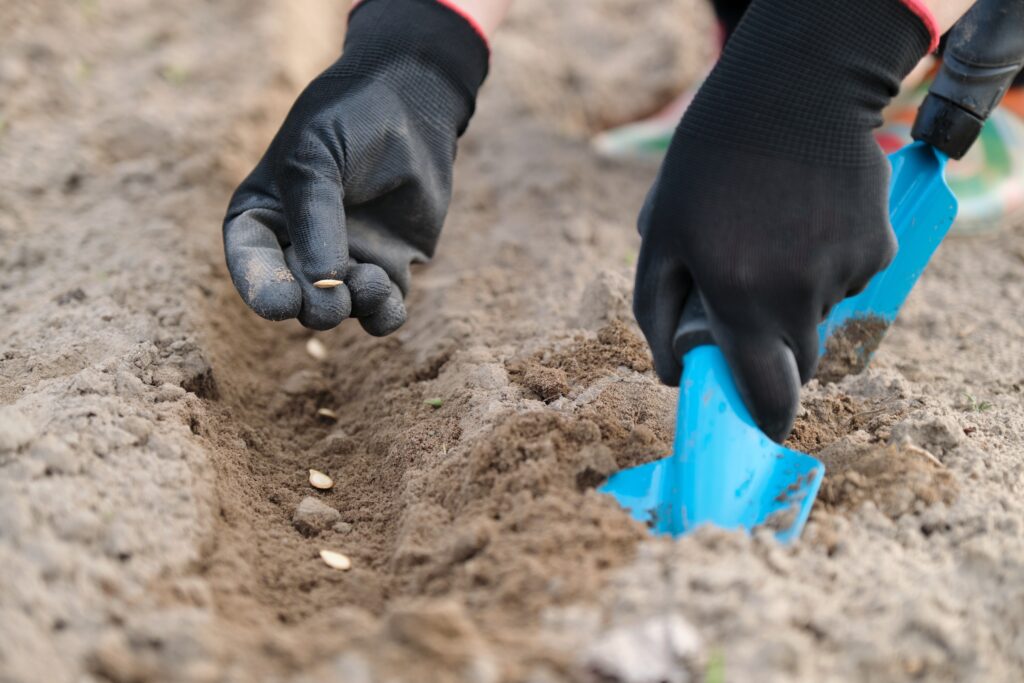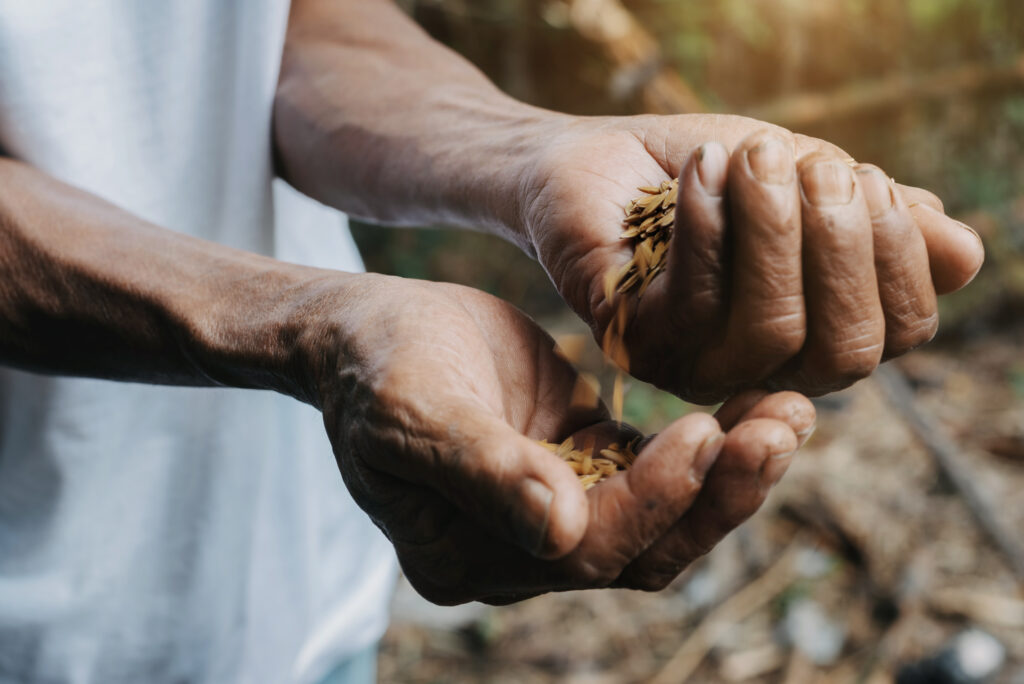
Cultivating Elephant Grass from seeds can be a rewarding experience for gardeners. This decorative grass is straightforward to propagate and can be situated in numerous landscape areas. Not only does it appear pleasing, but it also provides commendable ground cover and erosion control.
Regardless of whether one desires to generate a low-maintenance lawn or an attractive border for their flower beds, Elephant Grass is an excellent choice. In this blog post, we explore the most effective methods for developing Elephant Grass from seed, including indoor germination and outdoor planting after the final frost date.
We’ll also provide essential tips for nurturing your plants during their initial growth and beyond, ensuring you get the most out of your new plantings.
Understanding the Unique Characteristics of Elephant Grass Seed

Elephant grass is a perennial grass native to Africa and the Indian subcontinent, which has also gained recognition in other parts of the world. Its tall, tufted vegetation that can reach heights of up to 8 feet, boasting impressive long blades. The seed heads of elephant grass stretch out at lengths beyond 15 inches, making it an ideal choice for ornamental purposes within landscaping projects.
However, there is a lot more to this multifaceted plant than meets the eye. Not only can it be employed as fodder for livestock, but its leaves are also incredibly useful when used as mulch, and even the heads of the seeds may be harvested in order to provide birdseed or act as a source of human nutrition. Before becoming too enthusiastic about cultivating elephant grass from seeds, one should be aware of its distinctive properties. These seeds require light for proper germination, so they need to be exposed either directly to sunlight or illuminated by bright artificial lighting to ensure effective sprouting.
In addition, warmth and moisture are essential for the successful germination of elephant grass seeds. Ideal temperatures range from 70-85°F; any lower might completely impede the sprouting process. Nevertheless, once these have been established, they can endure temperatures as low as 50°F without issue.
As a result, if you live in an area with particularly cold winter conditions, it may pose a challenge when attempting to establish well-rooted elephant grass seedlings before the onset of cold weather, unless you have access to propagation equipment such as a heated greenhouse or a hotbed frame.
Once planted, elephant grass grows rapidly and requires regular maintenance through mowing to prevent it from overrunning your garden beds. However, once established, it becomes a captivating addition to any garden due to its towering height and intricate leaf patterns throughout the year.
While growing elephant grass from seed may seem daunting initially, with the right information and dedication to tending to this fast-growing species, anyone can cultivate their own beautiful landscape.
Exploring Various Seed Varieties of Elephant Grass
Choosing the right seed variety is crucial when considering elephant grass cultivation, as different varieties are tailored to specific environments and climates. Let’s explore some popular seed options for elephant grass:
To assist individuals in choosing the most suitable option for their specific circumstances, here’s a brief summary of some popular seeds used for cultivating elephant grass. One noteworthy variety to explore is Pennisetum purpureum, commonly known as Napier grass or simply ‘elephant grass.’
This variety grows rapidly and can reach heights of up to 10 feet if not properly managed. It has a deep green colour with long stems, and it can be harvested several times per annum for hay production or fodder purposes.
Pennisetum purpureum thrives in full sun but is not frost-tolerant, making it better suited for planting in regions with milder climates and consistently warm temperatures during the colder months. Another popular choice is Pennisetum glaucoma (more commonly known as “Pearl Millet” or “Bajra Millet”, depending on its region of cultivation).
This slower-growing grain variety yields a substantial harvest when mature. However, it requires more water than Pennisetum purpureum. Therefore, when considering this type for planting in drier regions such as deserts or arid areas, careful irrigation planning is essential.
Furthermore, Pearl millet thrives in warm temperatures and requires abundant sunshine. Therefore, planting it during the summertime can lead to more significant yields at harvest compared to planting it during colder months when there are fewer daylight hours and reduced sunlight exposure. Additionally, Setaria viridis, often known as foxtail millet, features distinctive seed heads that resemble fox tails and are ready for harvesting.
Essential Tips for Planting Elephant Grass Seeds Successfully

Elephant grass is a species of perennial grass originating in Africa. It has become sought-after globally owing to its captivating look and capacity for thriving under almost any conditions. Therefore, it can be exploited for various purposes, such as fodder for livestock or being served as an ornamental addition to one’s garden. Nonetheless, if you are considering sowing elephant grass seeds, then certain essential guidelines have to be adhered to so that the endeavour can be successful.
It is crucial to source your seeds from a reliable supplier, as there can be significant variations in quality among different vendors. Reliable sources provide viable seeds that increase the chances of successful germination when planted correctly. Additionally, selecting a location with abundant sunlight and efficient drainage is crucial, as elephant grass thrives on both sunlight and water for successful cultivation.
Once you’ve chosen your location, proper soil preparation is key. Adding compost or fertiliser before planting will encourage root growth and healthy foliage production once the elephant grass becomes established.
.
When it comes to sowing the seeds, there are two potential methods to consider. One approach is to broadcast the seeds evenly across the surface and lightly rake them so that they are thinly covered by soil. This method works effectively when there is no competition from nearby plants for resources. Alternatively, you can choose to sow each seed individually into holes, which should be about two inches deep, and then gently cover them with soil. Afterward, it is essential to maintain regular watering until sprouts emerge, typically within two weeks. However, it’s worth noting that the exact timing may vary depending on local climatic conditions, so diligent observation is necessary.
As the shoots begin to emerge, it becomes essential to establish a regular maintenance routine. Frequent weeding is crucial to minimise competition from weeds and to maintain moisture levels, preventing rapid evaporation during dry periods. Mulching around the plants can also aid in these efforts. Additionally, exercise caution when fertilising; avoid over-fertilisation, as excessive nutrients can lead to burning or even plant fatalities. Always adhere to precise instructions when using fertilisers or compost to ensure the best results.
Ideal Growing Conditions for Thriving Elephant Grass
Elephant grass is an expeditious growing, trouble-free, sustainable grass species ideal for any lawn or garden. This robust grass necessitates little in the way of maintenance and can prosper in almost any type of soil. Nevertheless, it possesses certain requisites that must be satisfied for it to flourish correctly and thrive.
The most integral factor for elephant grass growth is sunlight, as this particular kind of vegetation has a penchant towards full sun exposure since, without such illumination, the plant photosynthesises, thus permitting its healthy development rate.
If your location does not receive adequate sunlight, then artificial light will need to be used in order to supplement the energy necessary for the growth of elephant grass. Furthermore, temperatures must remain within a range between 40-85°F during active periods of development; any temperature outside these boundaries could hinder or cause harm to its progress.
When sowing elephant grass seeds into the soil, they should be planted at a depth no greater than 1/2 inch, with ample levels of organic matter and good drainage capabilities. Additionally, while growing throughout its season, it is important to maintain suitable moisture levels without going overboard, as this can lead to root rot and other fungal diseases, potentially resulting in plant death. Moreover, one should ensure regular fertilising with an all-purpose fertiliser explicitly designed for lawn use, which is even better suited!
Maintenance and Care Guidelines for Mature Elephant Grass
Selecting a location that is exposed to plenty of sunlight during the day is essential for ensuring successful growth when cultivating elephant grass from its seeds. The spectacular foliage and diversity of varieties make it an ideal choice for many gardens, but providing the correct maintenance and care are also critical components in achieving maturity.
Avoiding regions that are liable to flooding or pooling of water can be beneficial in preventing root rot and other difficulties instigated by inadequate drainage. After planting, it is imperative to administer regular watering so as to keep the soil damp, though not soggy, until fresh sprouts become visible; at this point, reduce irrigation quantities conforming with one’s needs once the plants have established themselves.
Also, fertilising mature elephant grass will invigorate healthy development accompanied by a pleasing aspect. One should use a slow-release fertiliser created for decorative grasses every three to four months throughout the vegetative season (April to September).
For the best results, one should ensure an even distribution of fertiliser across the whole bed whilst not exceeding any manufacturer’s instructions for application, as it could lead to burning or yellowing of leaves due to a build-up of salt over time. Regular pruning is essential when seeking consistent growth from mature elephant grass; trimming should occur twice per annum: early spring before emerging new growth (March/April) and late summer following completion of flowering (August/September).
It is necessary to maintain a consistent form by removing any dead or diseased foliage from earlier seasons, thus allowing for healthier shoots to take their place. It should be noted that pruning tools are best kept sharp so as not to cause damage to the delicate blades – either shears or scissors can be used depending on the size of the plant being trimmed back; however, it is advisable not to cut too far into the base stem when possible due to this potentially leading stunted future growth caused by insufficient nutrients reaching roots below ground level.
Lastly, controlling weeds around Elephant Grass beds is imperative in order to uphold healthy-looking plants throughout the season – hand pull any weeds found within the bed before they have an opportunity to set seed and spread further into the surrounding area – If utilising herbicides, one must always read label instructions carefully beforehand in order comprehend correct application methods & timings related with the product being employed!
In conclusion, the growth of Elephant grass from seed is an attractive and achievable prospect that demands a certain level of patience as well as careful attention to detail. Preparation for germination should begin with soil preparation, appropriate watering and levels of light exposure.
Once said seeds have sprouted, it is necessary to ensure adequate nutrition in addition to water supply are provided during their development stage. With dedication applied, one can successfully cultivate elephant grass from a seed basis, which will necessarily be an aesthetically pleasing complement for any landscape setting.
Are you seeking a means to remain fit and healthy? There is no need to look any further than Plant Judo! We have the ideal answer for you. Scheduling a call at this point will launch your voyage towards becoming healthier, fitter and more contented. Don’t dither – book your call without delay!

